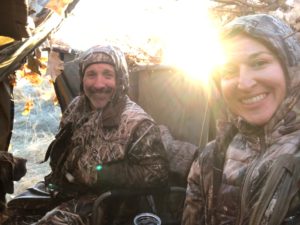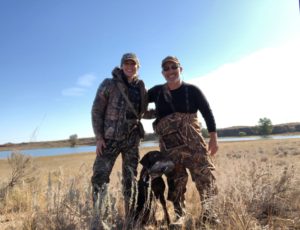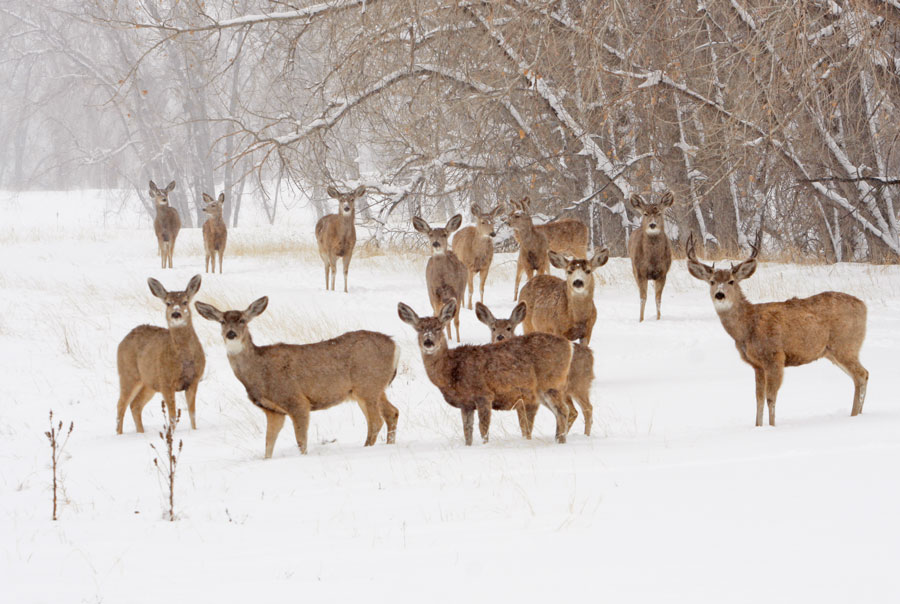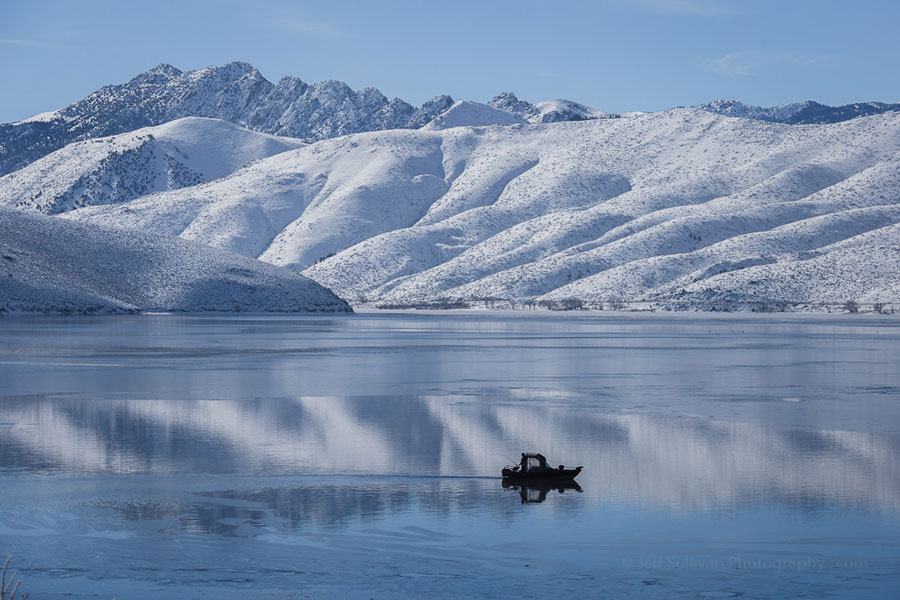Reflections from a rookie hunter’s first day afield
When the alarm went off, I had already been awake for 15 minutes. I easily popped out of bed and started layering up. Ed told me it would be chilly and I needed to be prepared for the crisp, fall air.
My butterflies were surprisingly active for 4:00 am. It felt like Christmas morning growing up in Montana, but instead it was opening day in Colorado. And I would need to work a little harder for any gifts that might come my way.
The pickup and trailer were already loaded down with decoys, two different blinds, a sled, extra clothing, and Deke, a chocolate lab who would prove to be an excellent partner in the blind. This was Ed’s 1,000th (or so) hunt, but it was my first.
Earlier in the year, I had mentioned on a work call that I wanted to start hunting and TRCP’s chief scientist Ed Arnett generously volunteered to take me on my first excursion. I was nervous about how this might all shake out, but Ed patiently calmed my nerves in the days leading up to our trip.

After a short drive, we pulled up near the pond where we planned to set up and I asked if I could be put to work. I wanted to know how to do it all. I wanted the experience of hauling the equipment to the spot, wading through the water, setting up the decoys, covering the blind with brush, and sitting quietly as the sun rose.
It was a picturesque morning, and a stereotypical beginning to my first experience in the field. Moments after placing the spread, a HUGE flock of birds flew overhead just before shooting light—so there we sat, still under the blues and yellows of the morning sky, waiting for the next opportunity.
As we waited, Ed walked me through the best way to hold my gun in the blind and what would happen when and if the next round tried to land. There’s something about duck hunting that is quite different than what I understand about big game hunting: It’s more social. Ed and I swapped stories of our experiences outside, talked to Deke, drank our coffee, and waited for the birds to come in.
I was eager to bust out of the top of the blind and take my first shot at a bird. I had practiced by breaking clays in the days and weeks leading up to this hunt. If I had the opportunity, I wanted to make sure not to miss.
As with any good hunting story, there are exaggerations and compressions and extensions of time. So this next part falls into the category of true, but the full story has been shortened so you don’t have to read a play-by-play of two full days in the blind with Ed and me and zero action. (You’re welcome.)
“Ed!” I whisper–yell.
He calmly signals for me to hold. Then, seconds later I hear him say, “Take them!”
We pop up out of the blind. There are three mallards just about to land. I fire. He fires. One drops.
It’s definitely not mine.
Deke retrieves perfectly and my pulse is racing.
There was something magical about the whole experience. I could have been disappointed that I didn’t get my first bird, but I wasn’t. I was grateful to be outside learning from an experienced hunter, feeling an indescribable rush, and taking it all in.
Whatever anxiety I’d felt about taking on this challenge, developing new skills, and putting myself out there had evaporated with the morning fog. The biggest takeaway from my time in the blind was clear: the attention and generosity of a thoughtful mentor can make all the difference in the world.

It was a great reminder that if our community will succeed in addressing some of the most important conservation challenges—hunter recruitment among them—everyone has a role to play, no matter how big or small.
As we packed up the decoys one–by–one, I was thankful for such a rewarding first hunting experience and knew it wouldn’t be the last.







At some point We will run out of Mallards. Shrinking habitat and nesting grounds and over populated hunters will see to that the species becomes extinct.